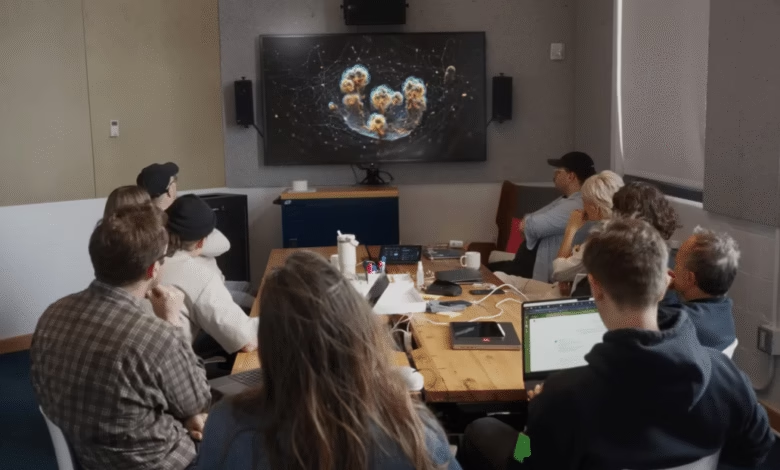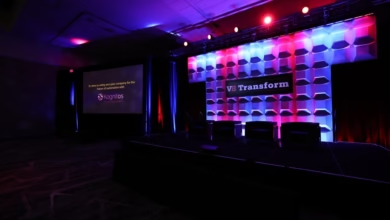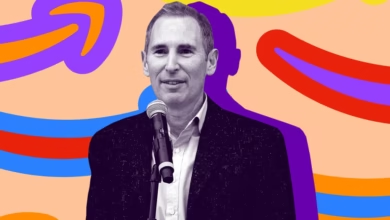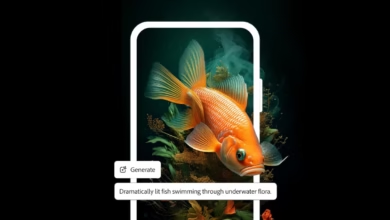Ancestra Reveals the Truth About AI-Generated Videos Today

▼ Summary
– The short film *Ancestra* used generative AI tools like Google’s Gemini, Imagen, and Veo to create visuals, including a CGI baby and surreal scenes representing the mother’s thoughts.
– The film’s AI-generated visuals, while technically impressive, lack narrative depth and feel clichéd, raising questions about AI’s creative limitations in storytelling.
– AI allowed the production team to bypass practical challenges, like filming with a real baby, but resulted in uncanny or decontextualized footage that detracts from realism.
– The project highlights concerns about AI replacing traditional filmmaking roles, such as VFX artists and concept designers, potentially reducing job opportunities in the industry.
– Despite AI’s potential for cost and time savings, *Ancestra* demonstrates its current limitations, such as short clip generation and compromised creative control, making it unconvincing as a breakthrough for Hollywood.
The short film Ancestra offers a glimpse into the future of AI-generated filmmaking, blending human performances with artificial intelligence to craft a deeply personal yet controversial narrative. Directed by Eliza McNitt in collaboration with Google’s DeepMind, the project showcases how generative AI can streamline production while raising critical questions about creativity, authenticity, and job displacement in Hollywood.
Ancestra follows an expectant mother grappling with her unborn child’s heart defect, weaving real actors with AI-generated sequences depicting her inner turmoil. Google’s Gemini, Imagen, and Veo models were used to visualize the baby’s condition and the mother’s fragmented thoughts, ranging from cosmic imagery to fleeting glimpses of motherhood. While the film’s emotional core is undeniably human, its reliance on AI-generated visuals gives it an uncanny, almost synthetic quality, as if pieced together from stock footage.
One of the most striking aspects of Ancestra is its use of AI to circumvent practical challenges. Unable to cast a real newborn, McNitt turned to generative models, training them on childhood photos to create a digital baby. The result is a hybrid performance, Audrey Corsa interacts with an AI infant in scenes that almost, but not quite, feel organic. Wider shots reveal subtle inconsistencies, like the mother’s hand hovering unnaturally over her child, yet the pacing masks these flaws.
Behind the scenes, the film’s production team was notably lean compared to traditional projects, highlighting AI’s potential to reduce costs and accelerate workflows. For independent filmmakers, this could democratize storytelling, but it also underscores a troubling reality: entire roles, from VFX artists to storyboarders—risk becoming obsolete. McNitt emphasizes collaboration, yet the film inadvertently fuels fears of an industry where human creativity is sidelined for algorithmic efficiency.
Darren Aronofsky, whose production company backed the project, acknowledges technology’s role in filmmaking’s evolution. However, his reaction to Veo’s eight-second clip limitation speaks volumes, AI still struggles with coherence and depth, forcing creators to adapt their vision to its constraints. McNitt admits the AI’s output shaped her script, suggesting a compromise between artistic intent and technical feasibility.
While Ancestra demonstrates AI’s growing capabilities, it falls short of proving the technology can deliver compelling, theater-worthy storytelling. The film feels more like a proof-of-concept for Google’s tools than a standalone artistic achievement. Cheaper, faster productions may appeal to studios, but without emotional resonance or narrative innovation, AI-generated content risks flooding the market with hollow imitations.
At its core, Ancestra is a promotional piece, a polished advertisement for Google’s AI ambitions. As Hollywood races toward automation, the film serves as a cautionary tale: efficiency shouldn’t come at the cost of human artistry. For now, AI remains a tool, not a replacement, and its limitations are as evident as its potential.
(Source: The Verge)






